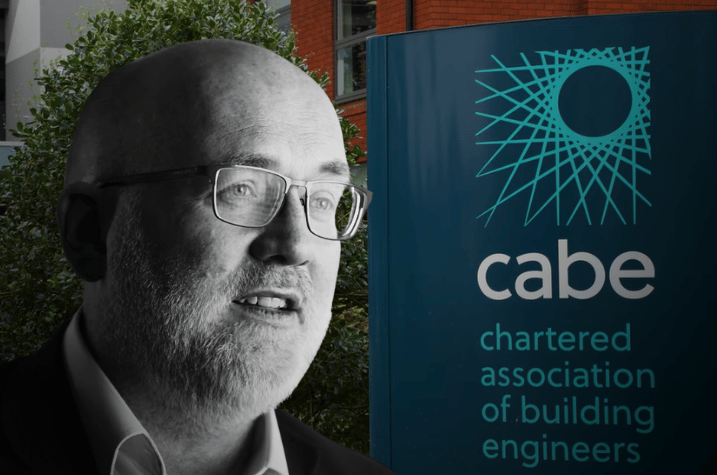GUEST BLOG | Building Safer Outcomes, Not Just Better Buildings

By Richard Harral, Chief Executive Officer at Chartered Association of Building Engineers (CABE)

The drive to deliver safer buildings has never been more important, or more urgent. At Chartered Association of Building Engineers (CABE) we are a multidisciplinary Professional Engineering Institute with a Royal Charter.
Our members work across the full project lifecycle, and we are an active and engaged community, deeply committed to improving the built environment, and, above all, to making buildings safer for the people who use them.
There’s a growing consensus in the industry as to where we need to end up in terms of safety. We need to ensure that everyone involved in designing, specifying, constructing and maintaining buildings is assessed for competence and that there is a clearly defined understanding what they can and cannot do safely. The truth is our industry has not always done this well. In fact, competence has often been managed in a patchy, inconsistent way, or sometimes not at all.
It is no longer acceptable to claim that a person, system or product can be trusted simply because we believe that is the case. In particular, third-party testing of products becomes fundamental, not only in enabling designers to have confidence in what they are specifying, but also to help rebuild trust in a broader sense; that the products are going to deliver the safe outcomes people quite rightly expect.
This means that we have to move beyond minimum standards of compliance. It’s critical that product and system manufacturers and everyone in the industry starts to look at how they deliver the right outcome, rather than simply box ticking to secure sign off from building control or any other authority.
This is why the new competence frameworks that are being developed by the Industry Competence Steering Group (ICSG) and BSI, and the new ways of applying them, are so valuable. One good example of these new standards is BS 8670-2, a companion to BS 8670-1, which is the core criteria for building safety and competence frameworks. While Part One sets our general principals, Part Two focuses on construction products and sets out what competencies people need have to be able to specify, use, install, maintain and manage construction products to ensure the right outcomes.
The shift towards competency based systems will help continuously upskill our industry. It will encourage people to seek out learning that’s directly relevant and applicable and focuses on maintaining competence throughout their career. In relation to construction products, this will be vital in helping everyone make better decisions throughout the life of a building.
The Building Safety Act (2022) has changed people’s accountabilities; and the timescales in which they can be held to account. This means that in addition to focusing on safe outcomes, everyone has to be more mindful about how they can defend their decisions if something does go wrong.
The advice we give is simple: when in doubt, apply the precautionary principle. What does that mean in practice? It means utilising systems and approaches that you know, understand and trust. It means adding extra levels of mitigation to ensure higher degrees of certainty that the systems and products you are using are going to perform as expected, throughout the lifecycle of the building.
It’s important that construction professionals, building users and the residents who they serve have peace of mind and confidence that the right outcomes are being achieved in a context where buildings are becoming increasingly complex, we are asking them to perform to higher standards over time, both in terms of safety and energy efficiency. The only way that we are going to achieve this peace of mind is if we think differently about how we design and specify.
That means taking a holistic view of building performance. We have to consider how each element will perform in relation to and in combination with others, rather than looking at a single product’s conformity. We must also look at additional levels of mitigation where we have any concerns, or doubts, about the overall performance of the building when it’s actually in use.
This definitely means leaning to a greater extent on third-party certification and testing of both products and systems – and increasing the number of systems that are tested at scale. It may also mean narrowing the supply chain we use so that we work with products and systems on a more frequent basis. We must become more familiar and confident in the way that they perform and in the way that we need to use them.
This is where manufacturers have a critical role to play, by providing tested, well-documented solutions and the technical support that helps designers and contractors specify with confidence. IG Masonry Support clearly understand this imperative, and it is great to see the investment they are making in helping delivery better quality and safer outcomes.
At CABE, we are committed to working with proactive professionals to, help build a safe, sustainable and equitable built environment. This is important to our members, who are professionals with a real passion for the work that they do. It’s also fundamental to ensuring that people are safe, and feel safe in the homes and workplaces that matter to them.
Request CPD Presentation
Gain your CPD points by requesting a Continuous Professional Development presentation on IG Masonry Support solutions.
Request CPD


